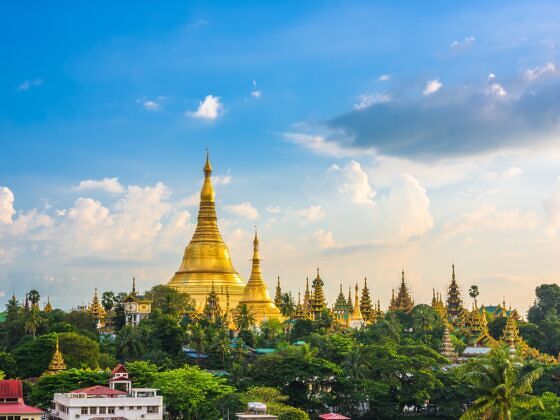The white marble platform of the Shwedagon Pagoda is warm under my bare feet. Yangon, Myanmar, is already steamy, and it’s only 8am. Up here the hum of engines and sharp bursts of car horns below sound distant, but the humidity is as thick as it is on the root-tangled streets.
A smiling woman in uniform points at my ticket. It’s a kitsch photograph of the gold-plated cone of the Shwedagon. She checks the date stamped on it while I look at the creamy smudges of thanaka on her cheeks — tree-bark paste that’s dried like thick brush strokes. She nods and points down a quiet alley between rows of shrines.
